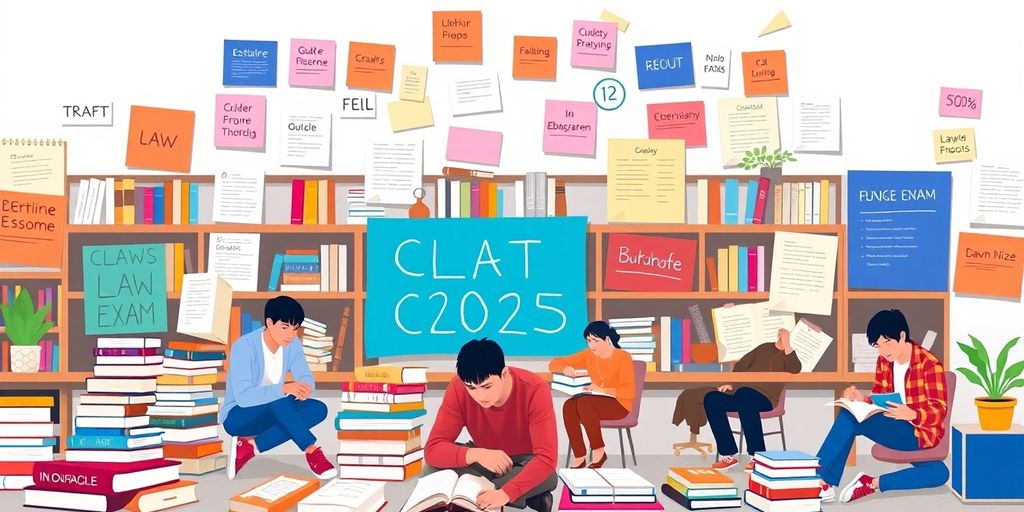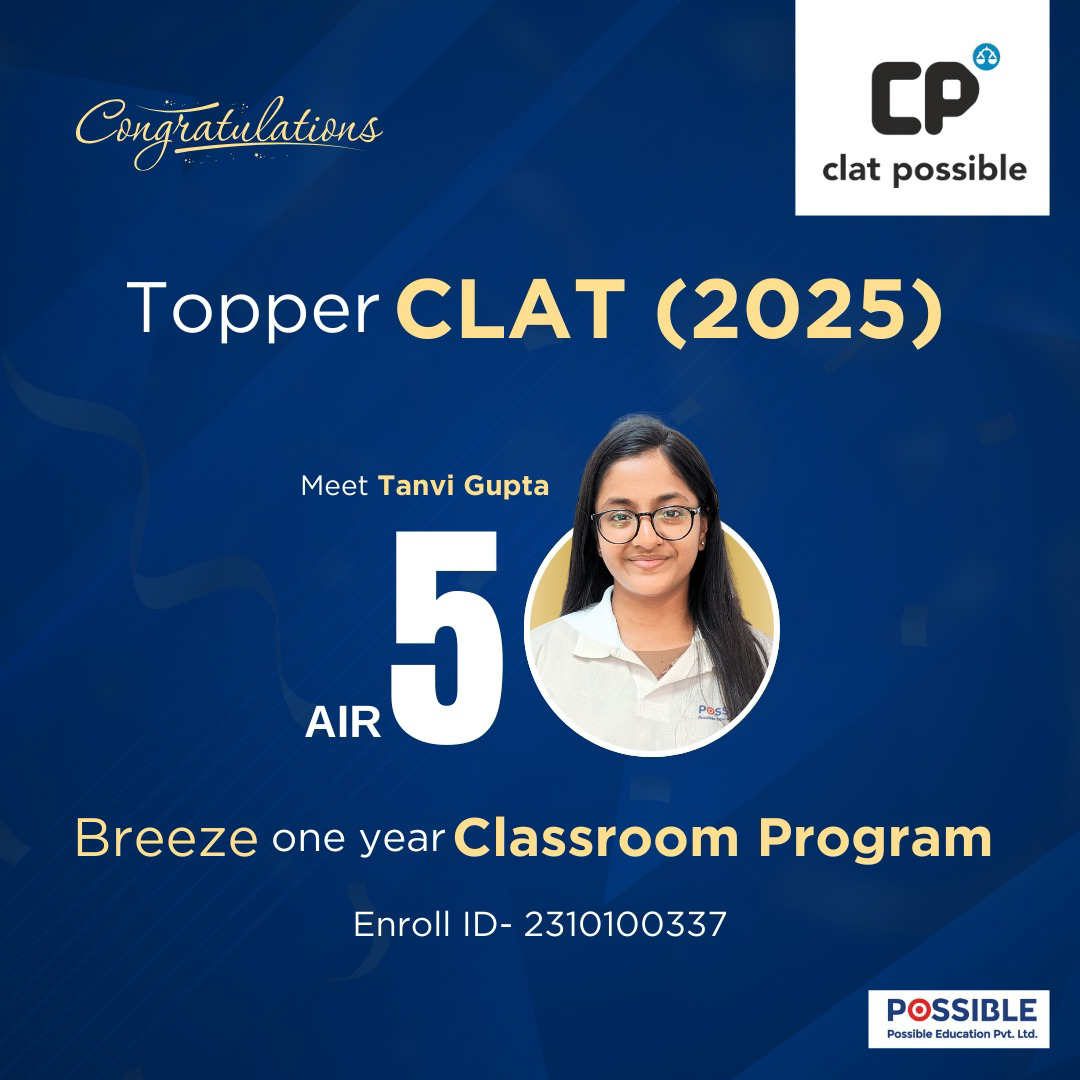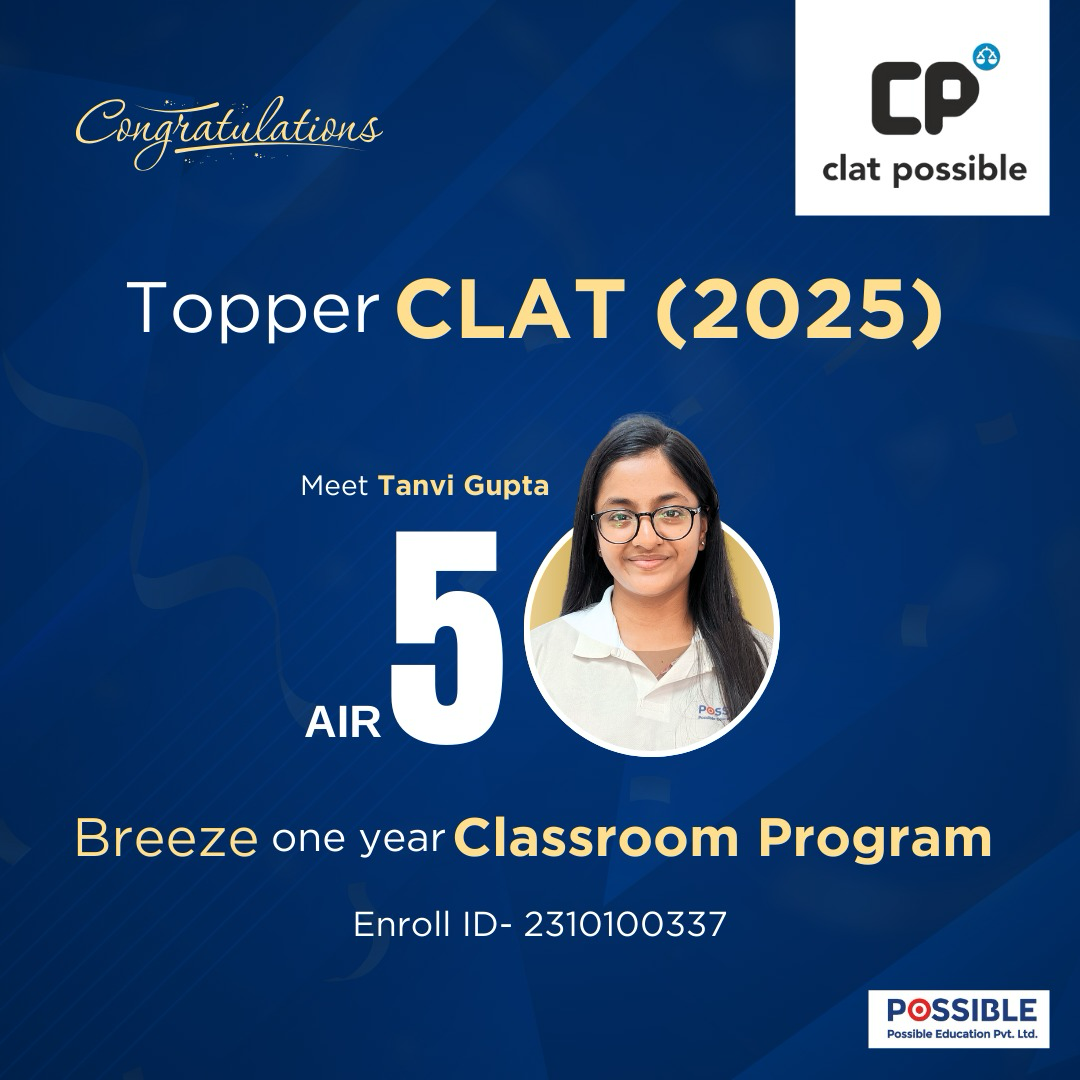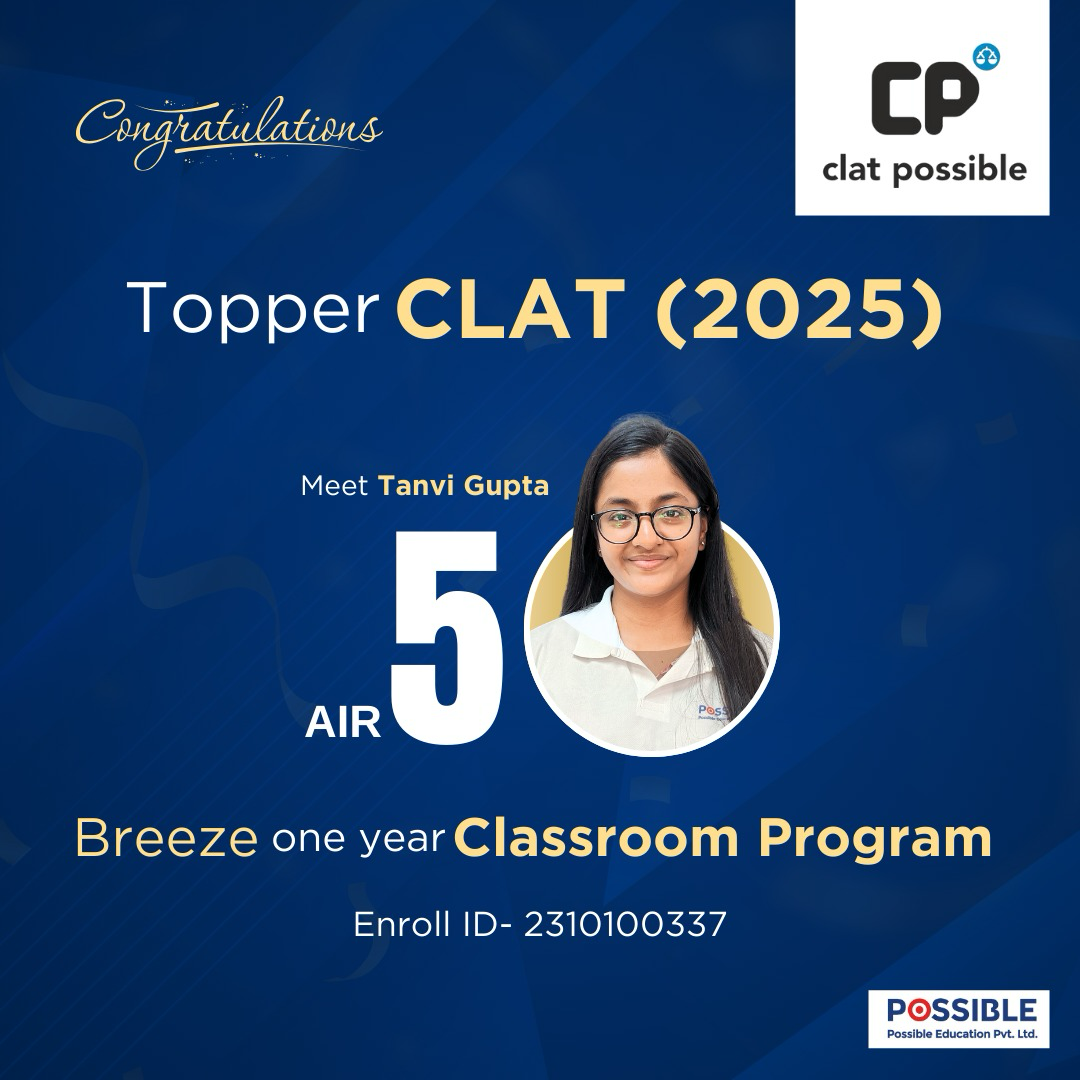The CLAT 2025 exam has stirred up quite the conversation. Students and experts alike are buzzing about the errors that popped up in the test. From mix-ups in the question paper to issues with the provisional answer key, there’s a lot to unpack. The Consortium of National Law Universities, which oversees the exam, has had to step in and address these concerns. They’re not just sitting back though; they’re actively working on solutions to prevent such blunders in the future. Meanwhile, experts are weighing in with their thoughts on how things went wrong and what could be done better next time. It’s a big deal because CLAT is a major gateway for law aspirants in India.
Key Takeaways
- CLAT 2025 faced significant errors in both the question paper and provisional answer key, causing widespread concern.
- The Consortium of National Law Universities is actively addressing these issues and planning future improvements.
- Experts suggest more rigorous pre-exam checks to avoid such errors in the future.
- The errors have sparked discussions on the need for a more transparent and efficient grievance redressal process.
- Despite the hiccups, CLAT remains a crucial exam for law aspirants in India.
Understanding the CLAT Exam Errors

Common Mistakes in CLAT Exams
The CLAT exam, known for its rigorous testing, often sees a few recurring mistakes. Misinterpretation of questions is a frequent issue, where candidates overlook key details. Additionally, errors in logical reasoning sections can stump many, causing unnecessary stress. Another common pitfall is the mismanagement of time, leading to rushed answers or skipped questions.
Impact of Errors on Students
Errors in the CLAT exam can be a real headache for students. They not only affect scores but also shake the confidence of many test-takers. Imagine spending months preparing, only to face unexpected hurdles on exam day. This can lead to anxiety and can even impact future performances. Students often express frustration over errors, feeling that their hard-earned efforts aren’t fairly evaluated.
Frequency of Errors in Past Exams
Looking back, errors in CLAT exams aren’t exactly rare. In recent years, there have been instances where questions were withdrawn or answer keys modified. For example, the 2024 exam saw two questions removed and one answer changed after the provisional key was out. Such occurrences highlight a pattern of inconsistencies that students have had to grapple with year after year.
The stress of encountering errors in a high-stakes exam like CLAT can be overwhelming. Many students find themselves second-guessing their abilities, which is a mental toll no one needs during such a crucial moment.
For those preparing for the next CLAT, avoiding common errors is key. It’s all about reading questions carefully, identifying keywords, and not making assumptions. Preparing for the Common Law Admission Test involves meticulous practice and understanding the exam’s nuances. By focusing on these strategies, candidates can boost their confidence and performance.
Consortium’s Response to CLAT 2025 Errors
Official Statements from the Consortium
The Consortium of National Law Universities, responsible for the Common Law Admission Test (CLAT), acknowledged the errors in the 2025 exam. They described the task of conducting the test as a "monumental responsibility," emphasizing that while challenges are inevitable, they remain committed to addressing them. According to their statement, maintaining the confidentiality of the question papers is a top priority to uphold the exam’s integrity, although this limits external validation before the test.
Steps Taken to Address Errors
To tackle the errors in the CLAT 2025 exam, the Consortium has implemented a multi-step approach:
- Immediate Withdrawal of Faulty Questions: Incorrect questions were promptly removed from the evaluation process.
- Modification of Answer Keys: The answer keys were adjusted for accuracy after identifying errors.
- Grievance Redressal Mechanism: A dedicated committee was set up to handle objections from students, ensuring a transparent review process.
This year, the Consortium introduced a portal for students to submit objections within a 24-hour window, enhancing the efficiency of addressing concerns.
Future Plans to Prevent Errors
Looking ahead, the Consortium plans to release more sample papers prior to the exam to allow for better preparation and internal review. They are also considering setting a standard difficulty level across sections to ensure consistency. By incorporating feedback from legal educators, such as those from CLAT Possible, they aim to refine the exam structure further. Additionally, they are exploring the possibility of increasing the number of subject matter experts involved in the question-setting process to minimize future errors.
Expert Opinions on CLAT Exam Errors

Insights from Legal Educators
Legal educators often highlight recurring issues with the CLAT exams. Every year, errors in the question papers cause confusion and stress among students. Experts like Harsh Gagrani from LegalEdge-Toprankers note that these errors are not new, with two to three mistakes cropping up annually. This inconsistency raises questions about the exam’s reliability. Educators suggest that the Consortium should release multiple sample papers, not just a 20-question sample for a 120-question exam, to better prepare both students and evaluators.
Suggestions for Improvement
Experts have a few ideas to improve the CLAT exam process. Here are some key suggestions:
- Increase the number of sample papers released before the exam.
- Ensure each section of the exam is thoughtfully designed, maintaining a consistent difficulty level.
- Provide a longer window for students to raise objections to the provisional answer key.
Comparisons with Other Exams
When comparing CLAT with other law entrance exams, experts note a few distinctions. Unlike exams such as AILET, CLAT has a broader scope but also a higher error rate. Students often prefer exams with fewer errors and more transparency in the evaluation process. The recurring issues in CLAT highlight the need for a more robust framework to ensure fairness and accuracy.
"The recurring errors in CLAT exams underscore the need for a more rigorous vetting process. Students deserve an exam that truly reflects their capabilities without the distraction of errors."
For those preparing for the CLAT, understanding these nuances is crucial. Avoiding common pitfalls can significantly improve performance. For more tips on avoiding common mistakes in CLAT preparation, check out our detailed guide.
Legal Implications of CLAT Exam Errors
Every year, the CLAT exam seems to encounter its fair share of hiccups, and 2025 was no different. This year, two CLAT PG students even took their grievances to the Supreme Court, challenging the provisional answer key. The Delhi High Court also stepped in, ordering the Consortium to amend results due to marking errors in two questions. Such legal battles underscore the growing frustration among candidates.
Legal Precedents and Outcomes
Legal precedents from past CLAT errors have often resulted in courts directing adjustments to results. For instance, in 2025, the Delhi High Court’s ruling benefitted all affected candidates by mandating corrections. These cases set a precedent, compelling the Consortium to be more vigilant in their exam processes.
Impact on Future Exams
These legal challenges not only highlight the errors but also push for reforms in the examination process. Future exams could see stricter protocols and possibly more transparency in the evaluation process. The legal scrutiny ensures that the Consortium remains accountable, which might lead to a more reliable exam experience for students.
The Role of the Grievance Redressal Committee
Structure and Function of the Committee
The Grievance Redressal Committee is a crucial part of the CLAT framework, designed to address and resolve complaints from test-takers. This committee ensures that every candidate’s voice is heard and concerns are addressed promptly. Led by a panel of legal experts, including former judges and law school vice-chancellors, the committee reviews each grievance with meticulous care. They are responsible for examining issues ranging from discrepancies in answer keys to procedural errors during the exam.
Effectiveness in Resolving Issues
The effectiveness of the Grievance Redressal Committee is often measured by its ability to resolve issues swiftly and fairly. Over the years, the committee has managed to handle numerous complaints, ensuring that the exam’s integrity is maintained. A structured approach is followed where grievances are categorized, prioritized, and addressed within a stipulated timeframe. This systematic handling of complaints has built trust among candidates, although some still feel that improvements in transparency and communication are needed.
Student Feedback on the Process
Student feedback on the grievance redressal process is mixed. Many appreciate the committee’s efforts in providing a platform for voicing concerns, but others find the process cumbersome and slow. A common concern is the fee imposed for raising objections, which some students feel adds an unnecessary financial burden. Despite these criticisms, the committee’s role remains essential in maintaining fairness in the exam process. For those preparing for CLAT 2025, expert mentors from CLAT Possible offer valuable insights and strategies to navigate these challenges effectively.
Impact of CLAT Errors on Admissions
Changes in Admission Processes
Errors in the CLAT exam can lead to significant changes in the admission processes. When errors are identified, the Consortium of National Law Universities often has to modify the results, which can delay admissions. This year, the Delhi High Court even ordered a revision of the CLAT 2025 results due to marking errors in two questions. Such changes disrupt the usual flow of admissions, causing confusion among students and institutions alike.
Student Reactions and Concerns
Students are understandably anxious when errors affect their exam results and subsequent admissions. The stress of potentially having to alter college preferences or even face the possibility of losing a seat can be overwhelming. Many students voice their concerns through social media and other platforms, highlighting the emotional toll these errors take. The grievance redressal process, while in place, often feels like an additional hurdle rather than a relief.
Long-term Effects on Legal Education
The recurring errors in CLAT exams could have long-term implications for legal education in India. They might influence students’ trust in the examination process, potentially affecting the number of candidates opting for law as a career. Over time, this could lead to a shift in how legal education is perceived, possibly prompting reforms in the examination and admission processes to restore confidence among aspiring law students.
The ongoing issues with CLAT exams highlight the need for a more robust and error-free examination system. Students deserve a fair and transparent process that accurately reflects their abilities and efforts.
Analyzing the CLAT 2025 Question Paper
Sections Affected by Errors
The CLAT 2025 exam paper had its fair share of hiccups. Notably, the Logical Reasoning section faced the most heat, with four questions being withdrawn after objections from candidates. This wasn’t the first time errors popped up in this section, as it seems to be a recurring issue. The final answer key saw adjustments in three more questions, highlighting the need for more rigorous checks before the exam is conducted.
Expert Analysis of Question Quality
Experts have pointed out that while the CLAT aims to challenge students, the quality of questions sometimes falls short. The issue often lies in the framing of questions, which can lead to ambiguity and confusion. Legal educators suggest that better structured questions would not only test knowledge but also critical thinking skills more effectively. The Consortium’s approach, though comprehensive, might benefit from additional external reviews to catch potential errors.
Recommendations for Future Papers
- Enhanced Review Process: Implement a multi-tiered review system involving both internal and external experts to minimize errors.
- Sample Papers: Release more comprehensive sample papers, at least three, well ahead of the exam to help students and educators gauge the expected standard.
- Feedback Loop: Establish a robust feedback mechanism post-exam to gather insights from students and educators, which can be used to improve future exams.
The CLAT exam is a gateway to prestigious law schools, and maintaining its integrity is paramount. Addressing these issues head-on will not only enhance the exam’s credibility but also ensure a fair assessment for all aspirants.
For those preparing for upcoming CLAT exams, resources like CLAT Possible offer valuable insights and preparation strategies. Their analysis of the CLAT 2025 exam structure and difficulty can be a great tool for students aiming to excel in future tests.
The Consortium’s Examination Protocols
Confidentiality and Security Measures
The CLAT exam is a huge affair, with thousands of students eyeing those coveted law school spots. Confidentiality is the backbone of the whole process. The Consortium of NLUs takes paper security super seriously. They say keeping the questions under wraps ensures fairness. But this also means there’s little chance to double-check the questions before exam day. Some experts suggest releasing a few sample papers ahead of time, like three, to not only help students but also test the questions’ clarity.
Challenges in Conducting Nationwide Exams
Running a nationwide exam like CLAT is no small feat. It’s a logistical rollercoaster. From ensuring the papers reach every corner of the country to managing unforeseen hiccups like natural disasters, the Consortium has its hands full. This year, they managed to pull off exams smoothly in places like Manipur and Tamil Nadu, even when the weather wasn’t playing nice. The goal is always to keep things smooth for the students, but perfection is hard to achieve.
Improvements in Exam Administration
Despite the hurdles, the Consortium is all about leveling up the exam game. They’re constantly tweaking the process to make it better. Suggestions are flying in from all corners. Some folks think detailed answer keys with explanations could help clear up confusion. Others believe that having multiple rounds of question checks could catch those pesky errors. It’s like a big puzzle, and every piece counts. For students, these improvements mean a fairer shot at their dream schools. And hey, if you’re prepping for CLAT, places like CLAT Possible can be your go-to for nailing those tricky questions.
Future of CLAT and Legal Education in India
Potential Reforms in CLAT Structure
The landscape of legal education in India is poised for transformation, with reforms in the CLAT structure being a key focus. The introduction of digital tools and platforms is likely to revolutionize the exam process. This shift aims to reduce human errors and improve accessibility for students across the country. Some proposed reforms include a more adaptive testing format, aligning with global standards, and integrating technology to streamline the exam process.
Role of Technology in Future Exams
Technology is playing an increasingly pivotal role in shaping the future of law entrance exams. Online platforms are now being used to offer virtual internships and simulated courtroom exercises, which are crucial for developing practical legal skills. These advancements not only enhance the learning experience but also prepare students for real-world legal challenges. The integration of AI and machine learning could further personalize the preparation process, tailoring it to individual needs.
Vision for Legal Education Standards
As we look towards the future, there’s a clear vision to elevate the standards of legal education in India. This involves updating curricula to include contemporary legal issues and promoting experiential learning. Institutions are focusing on building strong foundations in legal principles while encouraging critical thinking and practical experience through internships. Clat Possible is committed to supporting these changes, ensuring students are well-prepared for their legal careers.
The future of legal education in India holds promise, with a focus on innovation and quality. By embracing technology and reforming traditional structures, the legal field can open up new opportunities for aspiring lawyers.
Comparing CLAT with Other Law Entrance Exams
Differences in Exam Structures
When you look at the structure of the Common Law Admission Test (CLAT), it’s quite different from other law entrance exams like AILET and LSAT-India. CLAT is a centralized test used by multiple National Law Universities, except NLU Delhi, which conducts its own AILET. CLAT typically includes sections on English, legal reasoning, logical reasoning, quantitative techniques, and general knowledge. On the other hand, AILET focuses more on legal aptitude and English, while LSAT-India emphasizes logical reasoning and reading comprehension.
Error Rates in Other Exams
Errors in entrance exams can be a nightmare for students. While CLAT has faced criticism for frequent errors, it’s not alone. AILET occasionally has issues, but they’re less frequent and usually limited to answer key discrepancies rather than question errors. LSAT-India, being an international exam, tends to have stricter quality controls, minimizing errors. It’s clear that while no exam is perfect, some manage to maintain a higher standard of accuracy.
Student Preferences and Experiences
When it comes to choosing between these exams, student preferences vary widely. Some students prefer CLAT because of the number of universities it opens doors to. Others lean towards AILET for its focus on legal aptitude, or LSAT-India for its international recognition. Here’s a quick comparison:
- CLAT: Preferred for its wide acceptance across India.
- AILET: Chosen for its focus on legal aptitude and NLU Delhi’s reputation.
- LSAT-India: Favored for its global recognition and logical reasoning focus.
"It’s not just about the exam format; it’s about what each test represents in terms of career opportunities," says a student who recently took all three exams.
For those preparing for CLAT 2025, understanding these differences is crucial to tailor your study strategy. Platforms like CLAT Possible can offer insights and strategies to navigate these exams effectively.
The Financial Aspect of CLAT Errors

Cost of Raising Objections
Raising objections in the CLAT exam isn’t just about pointing out mistakes. It comes with a price tag. Candidates need to shell out ₹1,000 for each objection they file. This fee can add up quickly, especially if a student spots multiple errors. The Consortium argues that this fee is necessary to cover the resources involved in reviewing objections, which includes the time and expertise of subject matter experts. However, if an objection is accepted, the fee is refunded. This system is meant to ensure that only genuine concerns are raised, but it can be a financial strain for some students.
Financial Burden on Students
For many, preparing for the CLAT exam already involves significant expenses. From coaching classes to study materials, the costs pile up. Adding the fees for raising objections only increases the financial burden on students. This can be particularly challenging for those from economically weaker sections who might already be stretching their budgets. It’s crucial to consider these financial implications, especially when the goal is to make legal education accessible to all.
Consortium’s Fee Policies
The Consortium’s fee policies aim to balance fairness and operational costs. While they maintain that the objection fee is necessary, there’s ongoing debate about whether it deters students from raising valid concerns. Some suggest that the fee could be reduced or waived for students from economically disadvantaged backgrounds. This could ensure that all students feel empowered to speak up about errors without worrying about the cost.
The financial aspect of CLAT errors is not just about the immediate costs but also about ensuring that every student has a fair chance to succeed, regardless of their financial background. As the popularity of legal education grows, it’s important that the process remains equitable and accessible to all aspirants.
For those navigating the financial challenges of preparing for the CLAT, effective budgeting strategies can be a lifesaver. Understanding how to manage expenses efficiently can make a significant difference in reducing stress and ensuring a smooth preparation journey. Learn more about budgeting strategies for law aspirants.
The financial implications of the CLAT exam are just one of many challenges candidates face. From understanding the scoring system to dealing with intense competition, aspirants must be prepared for a rigorous journey. Dive deeper into the challenges of preparing for the CLAT exam.
Media Coverage and Public Perception
How Media Reports on CLAT Errors
Media outlets have a knack for picking up on the drama surrounding exams like the CLAT. Every year, headlines scream about errors and the ensuing chaos. Journalists love a good story, and when it comes to exam blunders, there’s plenty to write about. They dig into the details, sometimes exaggerating a bit to grab attention. But hey, that’s the media game, right? They want to keep their readers hooked.
Public Reaction to Exam Issues
When news breaks about errors in a big exam like CLAT, the public isn’t shy about sharing their thoughts. Social media lights up with comments, memes, and rants. Parents worry about their kids’ futures, students stress about their scores, and everyone has an opinion. It’s a real mix of anxiety and anger. The public wants accountability, and they demand answers from the authorities.
Influence on Consortium’s Reputation
The Consortium, which organizes the CLAT, often finds itself in hot water when errors occur. Public perception can take a hit, as people question their competence. Trust is a fragile thing—once it’s broken, it’s hard to rebuild. The Consortium has to work hard to maintain its reputation, addressing concerns and promising improvements. It’s a tough spot to be in, but necessary if they want to keep their credibility intact.
Media coverage plays a big role in how people see things. It shapes opinions and can influence decisions. If you want to learn more about how media affects public views, visit our website for helpful resources and insights!
Conclusion
In wrapping up the discussion on the CLAT 2025 exam errors, it’s clear that the Consortium of National Law Universities faces a challenging task. The errors in the exam papers have sparked significant debate and concern among students and educators alike. While the Consortium has taken steps to address these issues, including setting up a Grievance Redressal Committee, the recurring nature of these errors suggests a need for more robust measures. Experts have proposed solutions such as releasing more sample papers and ensuring a consistent level of difficulty across sections. As the Consortium continues to refine its processes, the hope is that future exams will be free from such errors, providing a fair and stress-free experience for all candidates.
Frequently Asked Questions
What is the CLAT exam?
The CLAT exam is a national-level entrance test for admission to law programs in India. It stands for Common Law Admission Test and is conducted by the Consortium of National Law Universities.
Who can take the CLAT exam?
Indian citizens and NRIs are eligible to take the CLAT exam. Foreign nationals interested in law courses at participating universities should contact the universities directly.
What subjects are covered in the CLAT exam?
The CLAT exam includes questions from English, Current Affairs, Legal Reasoning, Logical Reasoning, and Quantitative Techniques.
How can I raise an objection to a question in the CLAT exam?
If you find an error in a question, you can raise an objection by submitting it through the official portal within the given time frame, usually 24 hours after the provisional answer key is released.
What happens if there are errors in the CLAT exam paper?
If errors are found in the CLAT exam paper, the Consortium may withdraw incorrect questions and modify the answer key to ensure fair evaluation.
How do I get my CLAT exam results?
You can check your CLAT exam results by logging into the official CLAT website using your registered credentials after the results are announced.
Are there any fees for raising objections in the CLAT exam?
Yes, there is usually a fee of ₹1,000 per question to raise an objection. This fee is refunded if your objection is accepted.
What should I do if my CLAT exam results are incorrect?
If you believe your CLAT exam results are incorrect, you can file a grievance with the Grievance Redressal Committee for further review.






















